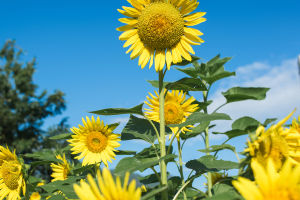Bergamot can be viewed as a potted plant or sold as a fruit. It comes in two colors: yellow or green. It is a citrus fruit and essential oil used in many recipes. It can make a great addition to homemade teas, marmalades, and desserts
White flower bergamot and red flower bergamot, the flower of safflower bergamot is red.
Bergamot likes a warm climate. Bergamot usually blossoms 2-3 times a year. Bergamot blossoms around spring April every year, and the fruit of bergamot is called "Fuguo".
The apex of the bergamot fruit divides like a finger, that is, the so-called outstretched hand; bergamot blossoms in summer every year, so the apex is split, so it is often called semi-stretched and semi-fist-shaped.
Bergamot blossoms in the autumn fruit, known as the "autumn fruit", the front end of the fruit does not crack but shows a clenched fist shape, so it is called a boxer. However, most of the fruits of "safflower bergamot", whether in summer or autumn, are in the shape of boxers.
When bergamot is planted in the field, it is not easy to take root, and it is difficult to blossom and bear fruit, but it can bear fruit if you pay attention to the method. The propagation of bergamot generally adopts the method of cutting bergamot or the method of grafting propagation.
Bergamot can generally be cut in spring or summer every year, and it is most suitable when the bud begins to sprout before each shoot growth.
Select the sturdy annual bergamot twigs, then cut the cuttings with a length of 8ml / 10cm, remove the lower leaves, leave a few leaves in the upper part, and then insert the bergamot cuttings into about 2/3 of the cuttings deep in the soil.
The culture soil of bergamot can be made from a mixture of garden soil and sand or coarse sand. Bergamot should be sprayed with water to keep moist after insertion, and then be maintained in a shaded and ventilated place.
Generally, it can take root after about 60 days, and wait for new branches and leaves to produce longer divisible seedlings and implant into small pots.
The cutting propagation of bergamot can be carried out in spring and April every year, and five-or six-year-old limes or wolves are generally used as rootstocks, while limes are better.
Bergamot can be cut and propagated in spring, summer and autumn except in winter, and it is better to cut and propagate in April or May every year. Cuttings or grafted bergamot potted plants, if well managed, can generally bear fruit in three or four years.
Bergamot will often lose its leaves in winter if it is not managed at that time, affecting its blossom and fruiting in the following year. Bergamot can be removed if some leaf buds have been sent out in spring, which can promote the growth of bergamot flower buds.
When the bergamot blossoms, the flowers around the panicle of the bergamot can be removed, leaving only the big green flowers. Because the ovary of fertile flowers is mostly green, the shape is large, and the ovaries of sterile flowers are yellow and small.


